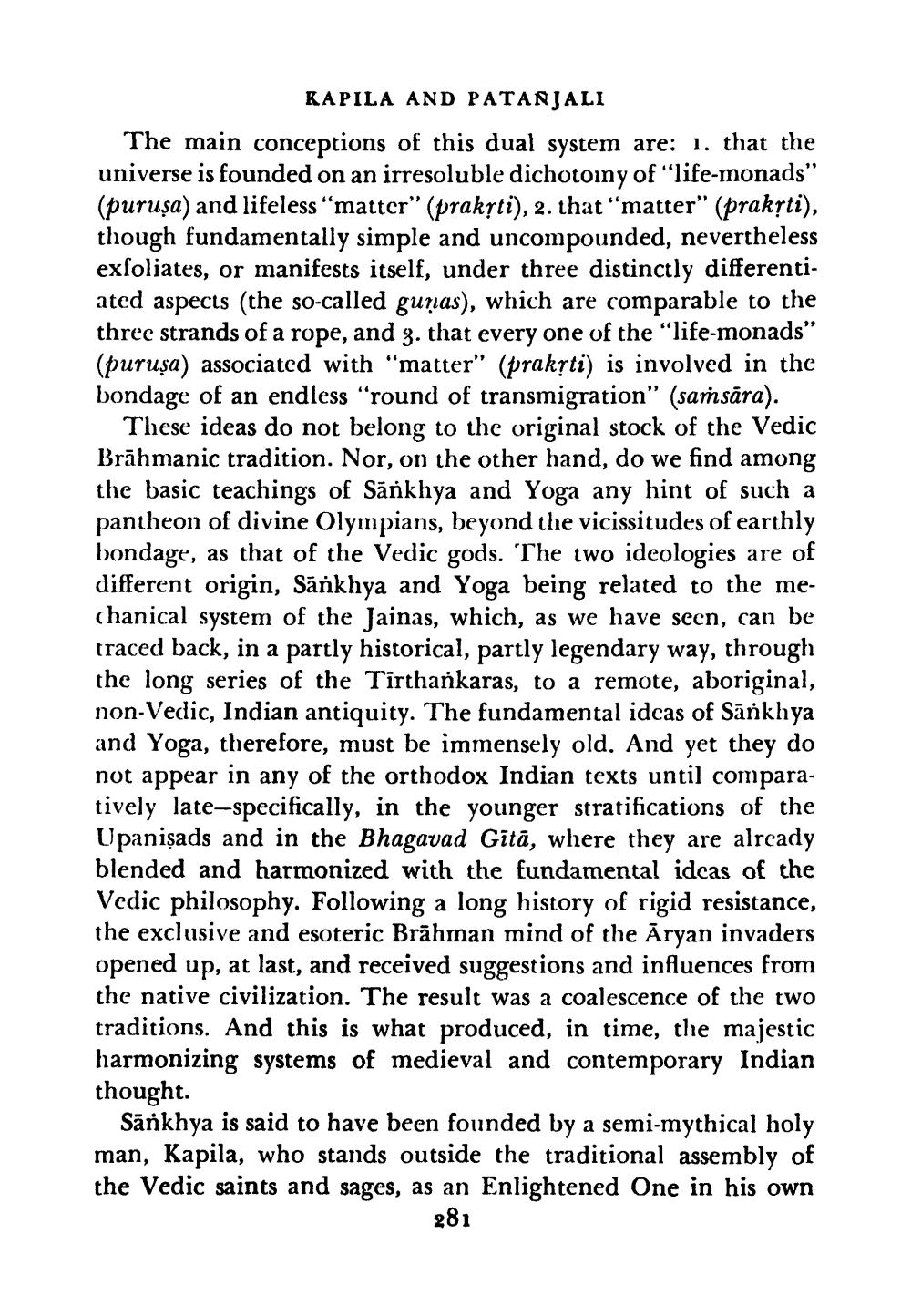________________
KAPILA AND PATANJALI
The main conceptions of this dual system are: 1. that the universe is founded on an irresoluble dichotomny of "life-monads" (puruşa) and lifeless “matter" (prakşti), 2. that “matter" (praksti), though fundamentally simple and uncompounded, nevertheless exfoliates, or manifests itself, under three distinctly differentiated aspects (the so-called guņas), which are comparable to the three strands of a rope, and 3. that every one of the “life-monads" (puruşa) associated with "matter" (praksti) is involved in the bondage of an endless “round of transmigration” (saṁsāra).
These ideas do not belong to the original stock of the Vedic Brāhmanic tradition. Nor, on the other hand, do we find among the basic teachings of Sānkhya and Yoga any hint of such a pantheon of divine Olyınpians, beyond the vicissitudes of earthly bondage, as that of the Vedic gods. The two ideologies are of different origin, Sänkhya and Yoga being related to the mechanical system of the Jainas, which, as we have seen, can be traced back, in a partly historical, partly legendary way, through the long series of the Tirthankaras, to a remote, aboriginal, non-Vedic, Indian antiquity. The fundamental ideas of Sáňkhya and Yoga, therefore, must be immensely old. And yet they do not appear in any of the orthodox Indian texts until comparatively late-specifically, in the younger stratifications of the Upanișads and in the Bhagavad Gītā, where they are already blended and harmonized with the fundamental ideas of the Vedic philosophy. Following a long history of rigid resistance, the exclusive and esoteric Brāhman mind of the Āryan invaders opened up, at last, and received suggestions and influences from the native civilization. The result was a coalescence of the two traditions. And this is what produced, in time, the majestic harmonizing systems of medieval and contemporary Indian thought.
Sārkhya is said to have been founded by a semi-mythical holy man, Kapila, who stands outside the traditional assembly of the Vedic saints and sages, as an Enlightened One in his own
281




